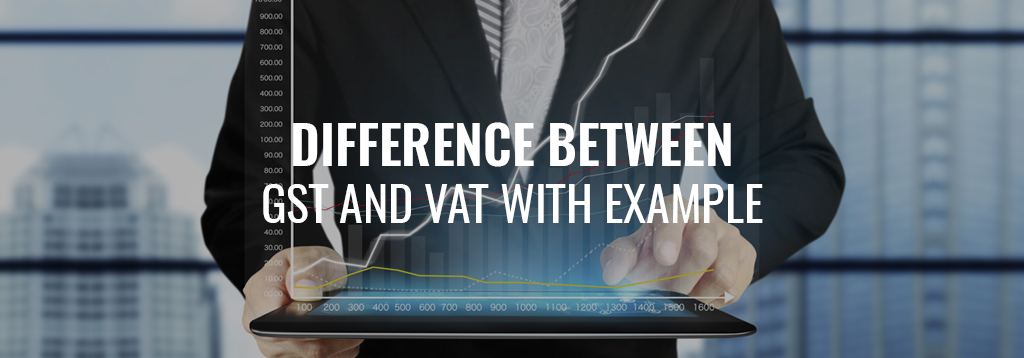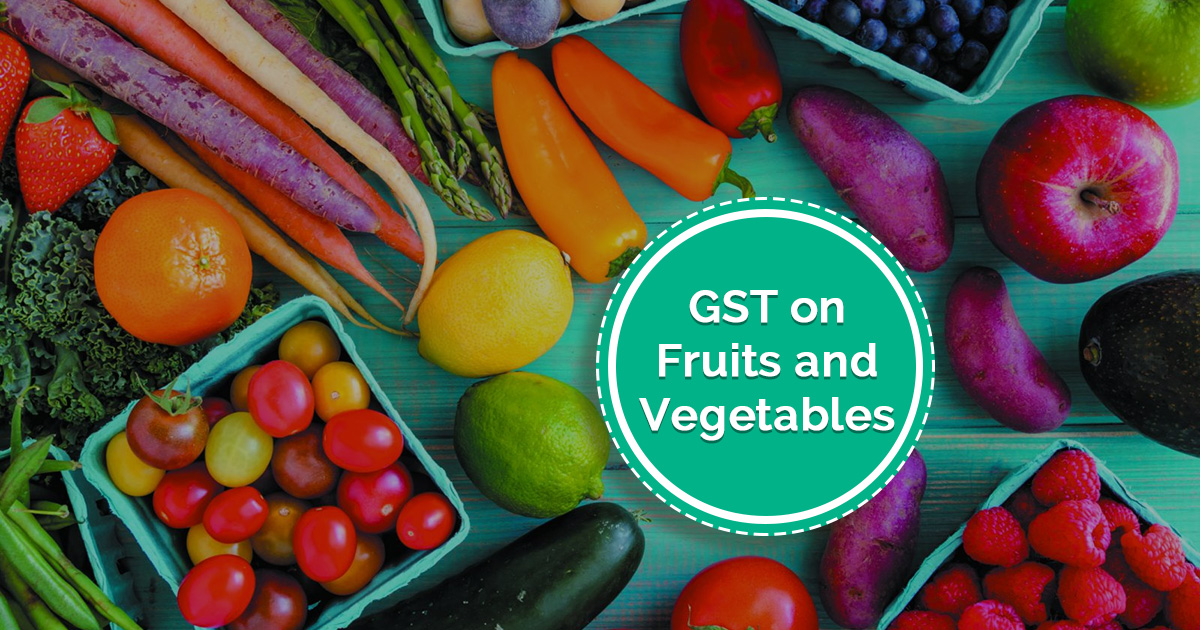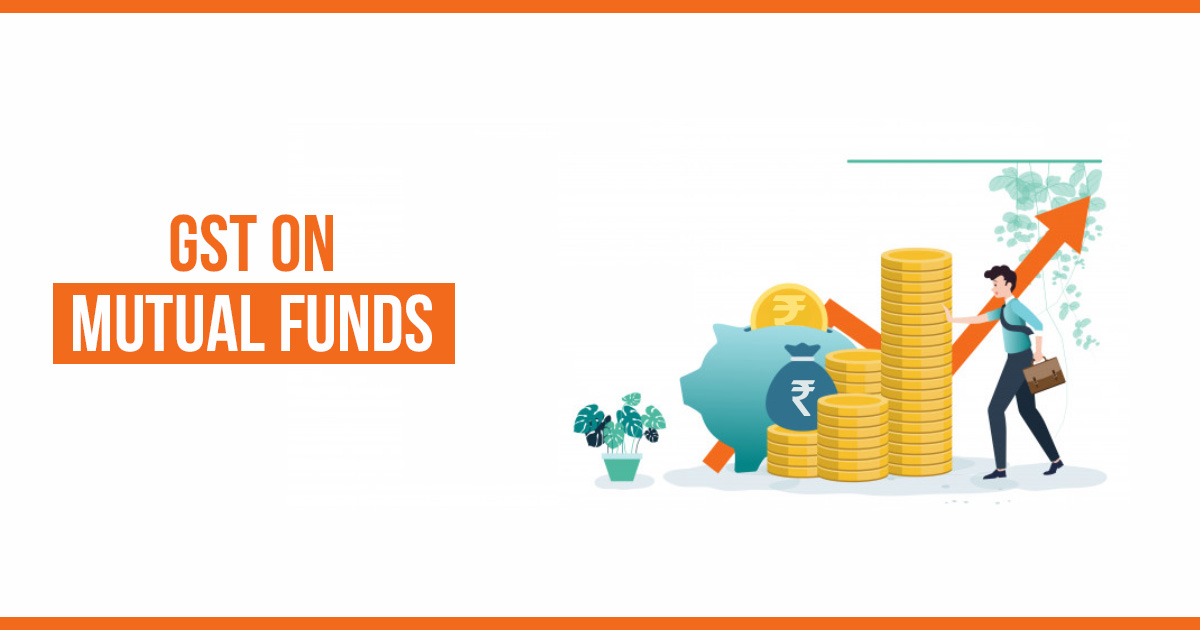Want to know the difference between GST and VAT? Let’s compare VAT vs GST with the example!
The Goods and services tax in India has been implemented from 1st July 2017, and it is supposed to bring a revolutionary change in the Indian taxation system with its unique model of implementing ‘one tax one nation’ formulae.
The GST has consumed all the indirect tax including VAT, service tax, Excise duty, octroi and all another indirect form of duties which were levied on every value addition of the product thus creating a cascading effect. And for this effect, GST has implemented to take down the unnecessary inflation.
While GST is an another form to make taxation easier, the VAT (value added tax) is a duty which is applied at every point starting from the manufacturing till the product goes into the hands of the consumer.
The value-added tax has its name from the method of adding tax at every stage. Goods and services tax and Value added tax have a number of differences on the basis of various points, like:
Return File Schedules
As mandated by the GST council and apex authorities, a taxpaying entity is required to file the returns and all the details of its sales by the means of online by the 10th of every succeeding month in the form GSTR-1 and keeping in mind the same method, the taxpayer will have to fill all the details of the purchases by the 15th of every month in the form GSTR-2 in the succeeding taxable month.
While at the 20th day of every month succeeding from the taxable month, the taxpaying entity must file its monthly return in the form GSTR-3. While at the end of the year, the taxpayer must file its annual return up to the date 31st December in the form GSTR-8 of the upcoming financial year.
While in the VAT system, the taxpaying entities are required to file the VAT return each quarter along with the sales register and the purchase register.
By the end of the year, the taxpaying entities are also obliged to file the annual return. Generally, in every state except, Maharashtra and Karnataka there is a provision of quarterly return as in these two states there is a provision of monthly return.
Contents
VAT vs GST System
| Transaction | GST System | VAT System | Comments |
| Sale within the state | SGST and CGST | VAT & Excise / ST* | Under the new system a transaction of sale with the state shall have two taxes, SGST – which goes to the state; and CGST which goes to the Centre |
| sale outside the state | IGST | CST & Excise / ST* | Under the new system, a transaction of sale from one state to another shall have only one type of tax, the IGST – which goes to the Centre |
Utilization of Input tax credit
GST is said to eliminate the cascading effects as the tax regime the entity can take the Cenvat credit of interstate sales purchase also. In GST the taxpaying entity can take the input credit even after the sales of the services.
This method will take down prices of the goods and services while making the inflation rate towards downsizing, ultimately increasing the economic growth.
While in the VAT tax credit system for CST, it cannot be availed in lieu of VAT payable thereby making a cascading effect like a tax on tax.
Cost Impact on Goods and Services
The Goods and services tax is introduced on the basis of its method of cost reduction of goods and services as there will be a single tax applicable i.e. goods and services tax in which the taxes are jointly added within a single frame.
While in the case of VAT system, a taxpaying entity could not use the credit of the other significant indirect taxes like service tax credit etc for the subsequent due payments of the VAT obligation resulting in the increase of cost of goods.
Difference Between GST and VAT with Example:
| Segment | Current Levies | Proposed GST Rate | Difference | ||||
| Central Excise | VAT | Total | CGST | SGST | Total | ||
| Small passenger cars (eg – < 1200 cc petrol and < 4000 mm) | 8.00% | 12.50% | 20.50% | 10.00% | 10.00% | 20.00% | 0.50% |
| Mid-size/luxury passenger cars (eg – > 1500 cc) | 24.00% | 12.50% | 36.50% | 10.00% | 10.00% | 20.00% | 16.50% |
| LCVs | 8.00% | 12.50% | 20.50% | 10.00% | 10.00% | 20.00% | 0.50% |
| HCVs | 8.00% | 12.50% | 20.50% | 10.00% | 10.00% | 20.00% | 0.50% |
| Tractors | NIL | 5.00% | 5.00% | NIL | 6.00% | 6.00% | -1.00% |
Taxation of Interstate Sales
In GST system on a nationwide basis, in the case of interstate sales and transactions, the provision of Integrated GST is applicable on all the interstate sales and purchases.
While in the VAT laws of taxation, the CST is applicable on all the interstate purchase and sales of the goods.
ITC Mismatch solution
Earlier there was always an issue of ITC mismatch, which will be solved under the GST regime, as an appropriate channel of dates is being assigned.
The details of sales will be filed till the 10th of every succeeding month while the details of purchase will be required to be filed by 15th of every succeeding month and last a final monthly return which is required to be filed by 20th of every succeeding month.
The assigned dates will prove to be beneficial as there is a mechanism to tally all the details within a month time of every taxpaying entity thus reducing any mismatch.
In the VAT system, the mismatch issue clings as the dates are not assigned specifically for the filing details of the sales and purchases before the VAT return filing giving a fully suspectable chance of a mismatch.
Conclusion
The above points of VAT vs GST clearly show a lot of major differences between GST and VAT and also ensuring that the GST will be an acceptable solution for all the issues regarding the VAT.
Important FAQs About VAT and GST
Q1. Whether all assessees/dealers who are already registered under existing VAT laws will have to obtain fresh registration?
Ans. No. GSTN shall migrate all such assessees/dealers to the GSTN network and shall issue GSTIN number and password. They will be asked to submit all requisite documents and information required for registration in a prescribed period of time. Failure to do so will result in cancellation of GSTIN number. The service tax assessees having centralized registration will have to apply afresh in the respective states wherever they have their businesses.
Q2. Today under VAT merchant exporters can purchase goods without payment of tax on furnishing of a declaration form. Will this system be there in GST?
Ans. No, there will be no such provision in GST. They will have to purchase goods upon payment of tax and claim refund of the accumulated ITC as discussed in section 38(2).
What is the difference between GST system and current VAT system? Please, do share your views and thoughts via comments.
Don’t miss any information about GST! Download GST App today to get the latest updates. Thank you!







is it necessary to zero the closing balance of stock left if yes then how can it be done or if not then, whether seller will bear the loss of the payment made on tax difference. suppose a product purchased having vat of 14.5% now after imposing of gst it will raise to 28%. so do we need to pay tax according to 28% or 14.5 %, if pay tax according to 28% then rate of product will be higher than mrp. soplease do suggest in this case ?
From the above example
1)The cost of Medium/luxury cars price will come down and tractor will increase. Is it true?
2)The tax revenue for the Government comes down. Is it true?
Luxury vehicles currently are taxed heavily at 55%, however, post-GST this tax would slip down to 43% (28% + 15%), resulting in a reduction of 12% in the tax rate.
The GST Council on Friday decided to reduce GST rate on exclusive parts of tractors to 18% from 28%.
Government revenue will be increased after GST, Read more here.